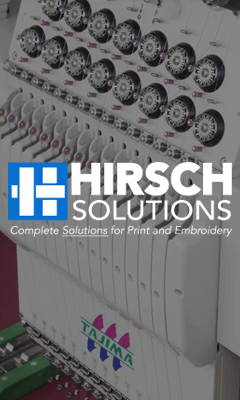Launching a t-shirt business can be an exciting journey, but it’s also one filled with challenges, especially when it comes to marketing and branding. If you’ve ever wondered how to turn your passion for printing into a thriving brand, this guide is for you. Drawing from expert insights shared by Latonia “Tee” Samuel of The Tee Academy, we’ll walk you through the foundational steps to build a successful t-shirt brand from scratch, focusing on smart t-shirt business marketing, social media strategies, and authentic branding.
Why Branding and Marketing Matter More Than Just Printing
Many new t-shirt entrepreneurs start with the printing process — learning how to heat press designs onto apparel or learning how to screen print. While these skills are important, the biggest gap in the industry is often marketing and branding. As Tee explains, “I saw a lot of t-shirt brands popping up on Instagram and social media, but there were so many gaps in marketing and branding.”
What does this mean for you? Simply printing a great design isn’t enough. You need to know who your audience is, what message you’re sending, and how to connect emotionally with your customers. In other words, you’re not just selling a shirt — you’re selling a vibe, a lifestyle, and an emotion that people want to be a part of.
Step 1: Define Your Target Audience and Message
The first and most critical step in t-shirt business marketing is understanding your target audience. Tee emphasizes, “If you know who you’re targeting, it makes it a lot easier to create content and designs.” This clarity helps you tailor everything from your product offerings to your social media posts.
- Who is your ideal customer? Are they fitness enthusiasts, coffee lovers, gamers, or sports fans?
- What lifestyle or emotion does your brand evoke? Are you selling motivation, humor, nostalgia, or community?
- What gaps exist in the market? By researching competitors on social media, you can find unmet needs or unique angles to differentiate your brand.
For example, if you want to target coffee lovers, your designs and marketing might revolve around coffee culture, humor about caffeine addiction, or recipes related to coffee. This approach makes your brand relatable and memorable.
Step 2: Use Social Media Platforms Smartly
In today’s world, social media is your most powerful marketing tool — and the best part? Platforms like TikTok and Instagram are free to use. Tee recommends focusing on:
- TikTok Live Streams: This feature puts you in front of a large new audience and lets you connect authentically by showing behind-the-scenes, talking about your brand story, or demonstrating your printing process.
- Instagram: Use Instagram Reels and Stories to highlight your products, share customer testimonials, or showcase lifestyle content that resonates with your audience.
When it comes to content, authenticity is key. Tee advises, “People buy from people. Just have genuine, authentic conversations.” Don’t worry about being perfect — start with what you have and improve over time. The idea is to “do it ugly” and “do it scared” because consistent posting improves your skills and visibility.
How to Hook Viewers Quickly
Social media users have short attention spans, so your content needs a strong hook — something that makes people stop scrolling. For example, a coffee t-shirt brand might post a quick “Starbucks recipe you can make at home” video, subtly showcasing your coffee-themed shirt in the background. This aligns your product with lifestyle interests and sparks curiosity.
Ideal video length: 15 to 30 seconds for lifestyle or product highlights, and up to 60 seconds for teaching or step-by-step tutorials.
How Often Should You Post?
There’s no “too much” when it comes to posting on social media. Since platforms are free, the more content you put out, the more chances you have to reach potential customers. Tee says, “Post as much as possible. The more reps you get, the better your content will be.”
Step 3: Start Small and Bootstrap Your Brand
Many people hesitate to start a t-shirt business because they think they need a big budget. The truth is you can begin with minimal funds. Tee shares her personal journey: “I started my brand with no money using print-on-demand.”
Print-on-demand (POD) allows you to test your brand concept without upfront inventory costs. If your designs sell well, then you can invest in equipment like a heat press or purchase blank shirts in bulk.
- If you have a budget around $300, consider buying a heat press and transfers to start printing in-house.
- If funds are limited, start with POD to validate your ideas and build an audience.
Step 4: Avoid Common Mistakes
Several pitfalls trip up new t-shirt entrepreneurs, especially in marketing:
- Relying on family and friends as customers: While they can support you initially, sustainable growth requires reaching a broader audience.
- Using static mockup images: Tee warns against posting AI-generated or mockup images alone. “People want to buy the real thing, not just an image.” Always order samples so you can create authentic photos and videos with actual products.
- Not being authentic: Avoid pretending to be someone you’re not. Genuine connections build trust and loyalty.
Step 5: Create Designs Without Being a Professional Artist
You don’t need to be a graphic designer to create compelling t-shirt artwork. There are plenty of accessible tools to help you:
- Canva: Easy-to-use for text-based or simple graphic designs.
- KD (Killer Designs): Great for swapping out colors and text in templates.
- AI Tools: Platforms like MidJourney and ChatGPT can help generate design ideas or artwork prompts.
Tee notes, “Most t-shirt businesses can start with a text-based design that hits an emotion.” Focus on crafting messages that evoke feelings, whether humor, motivation, or community pride.
Getting Started with AI for Design
AI tools might seem intimidating at first, but they have a quick learning curve if you invest time. Tee recommends following creators who teach prompt writing and AI usage. With consistent practice, you can generate usable designs within a month.
Step 6: Source Quality Shirts and Samples
Knowing where to buy shirts and understanding fabric quality is crucial. Tee suggests:
- Visiting local t-shirt shops to feel the fabric and see different types of garments.
- Ordering samples from suppliers to test how shirts wash and feel before committing to bulk orders.
This hands-on approach helps you understand your products better and creates more authentic marketing content.
Step 7: Choose Your Decoration Method Wisely
Your choice of printing method should align with your business model and budget. For beginners or side hustlers, Tee recommends:
- Screen print transfers or DTF (Direct to Film) transfers: These are low cost and flexible options that allow you to start small without heavy investment.
- Avoid buying expensive machines upfront. Focus first on your brand and audience validation.
Step 8: Build Your Online Presence and Sell Smart
Use TikTok Shop and Instagram Shopping
Having a store directly on social media platforms like TikTok Shop is a game-changer. It allows you to tag your products in videos and reach new customers organically. Tee says, “Even if you have a website, you should also have a TikTok Shop because the platform pushes your videos to new audiences.”
Why You Need a Website
While social media is powerful, owning your website is essential for long-term success. Here’s why:
- Data Collection: Capture emails and phone numbers to build your community and retarget customers.
- Consistent Branding: Ensure your website messaging matches your social media for a seamless customer experience.
- Marketing Automation: Use email and text marketing to promote new launches, special offers, or loyalty programs.
Key website features include:
- A compelling hero banner that highlights your current product or promotion.
- Popup offers like “Get 15% off your first purchase” to encourage email sign-ups.
- Easy navigation and a smooth checkout process.
Step 9: Invest Wisely in Advertising
Paid ads on Instagram and TikTok can accelerate growth, but require a budget and strategy. Tee recommends starting with $700 to $1,000 per month for advertising. Focus on authentic ads that don’t feel overly promotional — for example, a casual video of you enjoying coffee while wearing your coffee-themed shirt.
Use targeting options like location, age, and hashtags to reach your ideal audience. TikTok’s hashtag system is especially helpful for finding niche communities (e.g., #MomTok, #GymTok).
Step 10: Keep Your Focus on Emotion and Community
The key takeaway from Tee’s advice is to always connect with your audience emotionally. Every piece of content you create should answer:
- Who is this content for?
- How do I want them to feel?
- What action do I want them to take (share, save, buy)?
Building a community around your brand means your customers will keep coming back, and you can create recurring revenue through monthly drops, rewards programs, or exclusive launches.
Final Thoughts
Starting a t-shirt brand isn’t just about pressing shirts; it’s about creating a meaningful brand that resonates with your audience. By defining your target market, leveraging social media authentically, using accessible tools for design, and building a strong online presence, you can turn your side hustle into a successful business.
Remember Tee’s mantra: “Sell the emotion, not just the shirt.” Keep your message clear, your content authentic, and your focus on your community — and you’ll be well on your way to t-shirt business marketing success.
Ready to dive deeper? Explore more tips and free advice on the Ink Kitchen YouTube Channel to keep your t-shirt business thriving!


Comments